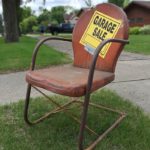 Twenty years in, it’s still undecided.
Twenty years in, it’s still undecided.
We have no uniform rule on what happens to equity in an asset, built up during a Chapter 13 plan, when the case converts to Chapter 7.
Amazingly, nearly 20 years after subsection (f) was added to 348, courts are split on how it works. But another court has just weighed in.
Given the propensity for Chapter 13 cases to crater, you need to know where your court stands on this critical issue.
The facts
The prototypical fact pattern has a encumbered car at the start of the plan. Over the course of a couple of years, the debt is paid down, creating equity not present at the commencement of the case.
Section 348(f) tells us:
1) Except as provided in paragraph (2), when a case under chapter 13 of this title is converted to a case under another chapter under this title—
(A) property of the estate in the converted case shall consist of property of the estate, as of the date of filing of the petition, that remains in the possession of or is under the control of the debtor on the date of conversion;







